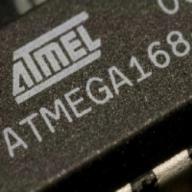Rusting of iron:
(A): Fe(s) → Fe2+(aq) + 2e-
(B): O2(g) + 2H2O(l) + 4e- → 4OH-(aq)
(C): Fe2+(aq) + 2OH-(aq) → Fe(OH)2(s)
(D): 4Fe(OH)2(s) + O2(g) + 2H2O(l) → 4Fe(OH)3(s)
(E): 2Fe(OH)3(s) + (n-3)H2O(l) → Fe2O3.nH2O(s)
Overall: 4Fe(s) + 3O2(g) + 2nH2O(l) → 2Fe2O3.nH2O(s)
1) For(E), why number of H2O is (n-3)?
2) How is the overall reaction formed? Why originally there is '2n' H2O, but the
product only has 'n'H2O?
F.4 Chem pls help 20點!!!
2014-01-24 7:20 am
回答 (1)
2014-01-24 8:58 am
✔ 最佳答案
2X(E) :4Fe(OH)3(s) + 2(n-3)H2O(l) → 2Fe2O3.nH2O(s)reform to 4Fe(OH)3(s) + 2nH2O(l) - 6H2O(l) → 2Fe2O3.nH2O(s)
and label as E'
4X(A) :4Fe(s) → 4Fe2+(aq) + 8e-
2X(B) :2O2(g) + 4H2O(l) + 8e- → 8OH-(aq)
4X(C) :4Fe2+(aq) + 8OH-(aq) → 4Fe(OH)2(s)
(D) : 4Fe(OH)2(s) + O2(g) + 2H2O(l) → 4Fe(OH)3(s)
E' : 4Fe(OH)3(s) + 2nH2O(l) - 6H2O(l) → 2Fe2O3.nH2O(s)
Add them all together and gives :
Overall: 4Fe(s) + 3O2(g) + 2nH2O(l) → 2Fe2O3.nH2O(s)
1) For(E), why number of H2O is (n-3)?
2Fe(OH)3(s) + (n-3)H2O(l) → Fe2O3.nH2O(s)
For 2Fe(OH)3(s) there are 2Fe 6O and 6H. On the product side Fe2O3 contains 2Fe and 3O, there are 6H and 3O left, it is 3H2O
there are nH2O on product side, only (n-3)H2O is required on the reactant side.
Why originally there is '2n' H2O, but the product only has 'n'H2O?
Fe2O3.nH2O(s) contains nH2O but 2Fe2O3.nH2O(s) contains 2nH2O.
2014-01-24 01:07:01 補充:
For 2Fe(OH)3(s) there are 2Fe 6O and 6H. On the product side Fe2O3 contains 2Fe and 3O, there are 6H and 3O left, it is 3H2O
there are nH2O on product side, only (n-3)H2O is required on the reactant side. Because 3H2O comes from 2Fe(OH)3(s) --> Fe2O3 + 3H2O
收錄日期: 2021-04-27 20:34:41
原文連結 [永久失效]:
https://hk.answers.yahoo.com/question/index?qid=20140123000051KK00242

